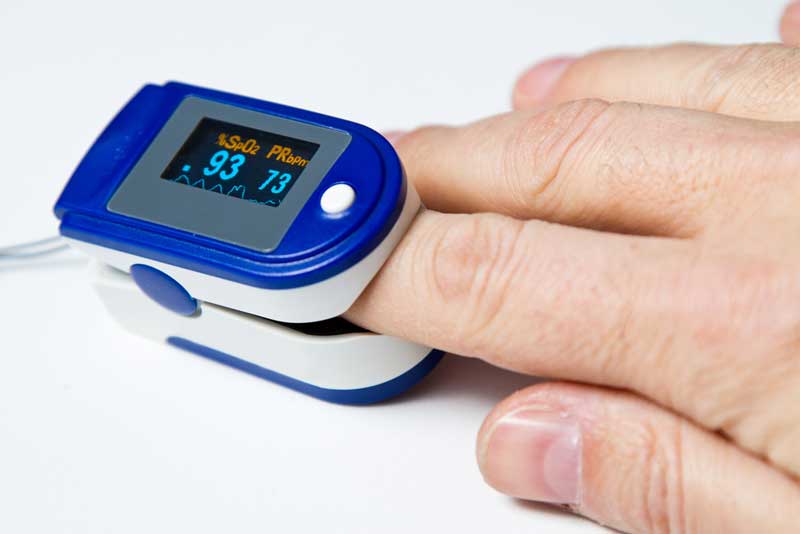Do you know what your blood oxygen saturation levels are? Should you know what they are? Do you actually know how to get a reading and why it might be useful? Let’s give you a crash course in what Pulse Oximetry is, and why it might be really useful to someone, even outside the normal medical setting.
Will An Oximeter Help My Fitness?
Pulse oximetry measures your blood oxygen saturation levels (SpO2), normally by simply clipping a little device on to the end of your finger. You may have encountered these in your gym when you’re using a piece of cardo equipment. Although they were originally designed for use in a hospital setting to monitor respiratory conditions or concerns such as COPD or emphysema, as well as the condition of patients with heart failure or lung cancer, the data that they provide was also seen to be highly useful to trainers of elite athletes.
You may not be an elite athlete, yet, but using Masimo personal oximeters can help you monitor what your SpO2 levels are, which helps you stay in an ‘aerobic zone’ where your muscles are getting enough oxygen supplied to be able to successfully turn glucose into Adenosine Triphosphate (ATP). When you don’t get enough oxygen your body instead starts to produce lactic acid. So, will an oximeter help your fitness? Well, not directly, but what it will do is allow you to continue to ensure that your body is getting enough oxygen, which means that you are exercising efficiently – and this of course will help increase your fitness levels. Wouldn’t you rather know that the 5km run on the treadmill you are in the middle of is actually doing you some good?

Pulse Oximetry – How Much Oxygen Should I Have?
Bear in mind that there are two types of ways to detect your oxygen saturation – SaO2 uses a needle (in a hospital or lab setting) to look at levels of arterial blood, while SpO2 uses the pulse oximeter. Your personal or gym meter should only be used to give you an indication of the effectiveness of your workout, and not to diagnose yourself with asthma or anything else.
With that aside, your SpO2 levels are given as a percentage oxygen/maximum oxygenation potential, and in a healthy human you should have more than 89% of your red blood cells carrying oxygen.
If you are exercising while wearing a personal oximeter you will be able to monitor your levels, with high blood oxygen levels meaning that you are getting a more intense, and more efficient workout.
If you notice that your percentage is showing a decrease, then you can focus more on your breathing, trying to ensure that you are breathing fully rather than taking the quick, shallow breaths that are more associated with a shortness of breath.
Can I Increase Oxygen Levels?
This is where talking to a professional can be really helpful, as if you are finding that you are constantly tired, even with exercise, fresh air and a healthy diet, there may be an underlying condition that is causing your low oxygen stats. However, for most healthy people the two things to focus on are diet and breathing.
Research (see here) has shown that proper breathing techniques using a slow breathing exercise, similar to those found in yoga practices, can improve the efficiency of your cardiovascular system. Breathing into your diaphragm rather than the top of your lungs is the basis for this, but the focus is when you are not exercising. Breathe in, fill your lungs and feel your diaphragm, abdomen and chest expanding – if you can do this several times while outside in fresh air (rather than standing next to a motorway), you will find the effects are even more powerful.
While you are exercising you also need to maintain good breathing techniques, and this is where a good personal trainer can help you to ensure that you are maintaining a healthy posture and breathing not only in a method that will maximize saturation but at a good speed – far too often people start to pant whereas pursing your lips may be more effective.
In addition, you will likely find that eating a diet high in raw fruits, green vegetables and that also include (unsalted) nuts and seeds will help to improve your SpO2 levels, although this will not happen immediately, and will also cause other healthful effects.
